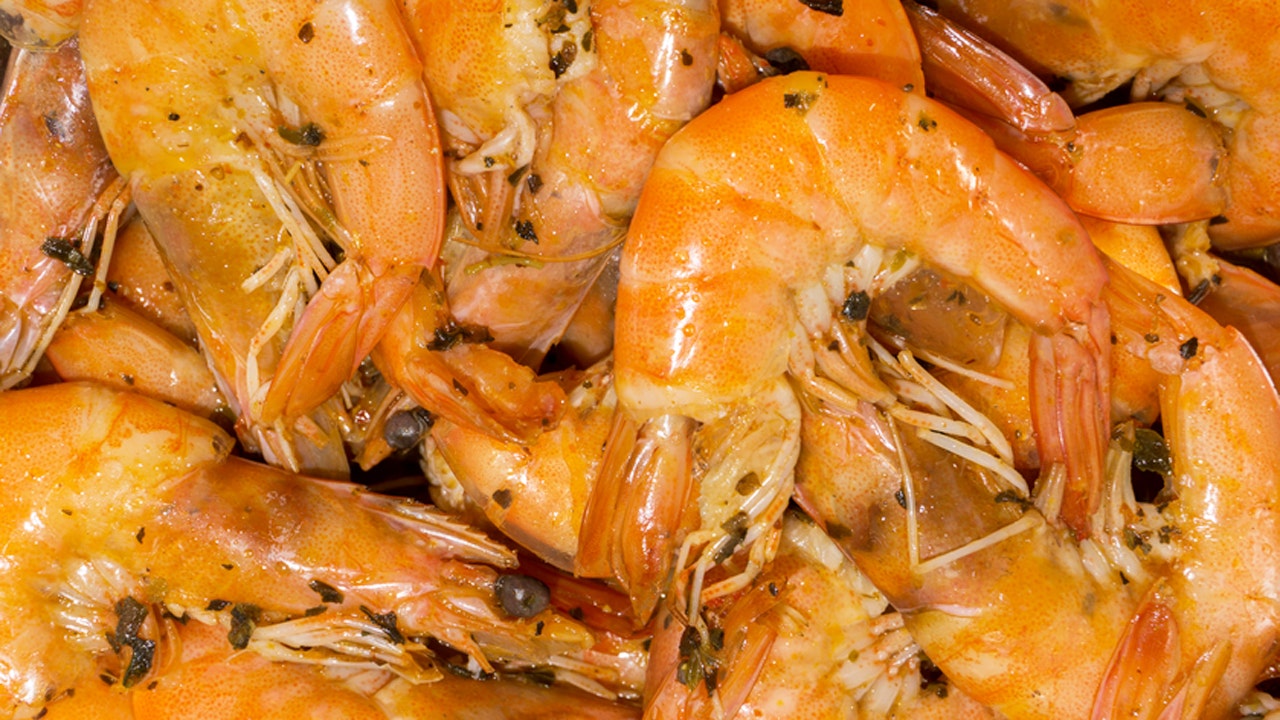This is an automatically translated article. Shrimp shell is a part rich in lean protein, healthy fats and minerals but often overlooked. Regular consumption of shellfish can boost immunity, aid in weight loss, and promote brain and heart health. However, this type of shell can be allergenic and contains some heavy metals. Therefore, you need to be careful when processing and consuming.
Shrimp is one of the most beloved seafood options worldwide, with millions of tons consumed annually. However, many people find themselves wondering – does shrimp have skin or shells? In this article, we’ll explore shrimp anatomy to settle the debate once and for all.
The Structure and Purpose of a Shrimp’s Exoskeleton
Shrimp are crustaceans, meaning they have hard external skeletons called exoskeletons. A shrimp’s shell is a complex multi-layered organ that covers its entire body, including the head, thorax, and abdomen.
The exoskeleton is made of chitin a fibrous substance that provides protection structure, and flexibility. Underneath the shell, shrimp have a thin membranous layer called the epidermis that functions similarly to skin in other animals.
Some key roles of a shrimp’s shell include:
- Protecting the shrimp from predators and abrasive environmental factors
- Providing an anchor point for shrimp muscles to allow for mobility
- Permitting growth through periodic molting and shell replacement
So in essence, the shell acts as both armor and a supportive framework for the shrimp’s soft internal tissues.
Why There’s Confusion Over Shrimp “Skin” and “Shells”
The debate around whether shrimp have skin or shells stems from the terminology used.
Those arguing shrimp have “skin” point out their outer layer is not a true hardened shell like in crabs or lobsters. However, others contend the exterior is just as protective as other crustacean shells.
Ultimately, it comes down to semantics. Shrimp clearly do not have a skin akin to mammals or other animals. Referring to their outer covering as a shell rather than skin is more anatomically correct based on its chitinous composition and function.
The Nutritional Value of Eating Shrimp Shells
Traditionally, shrimp shells are discarded before eating the meat. But can you eat shrimp shells? And are there any nutritional benefits?
Shrimp shells are perfectly edible, though the taste and texture might be unappealing to some. Eating the shells adds a crunchy, briny flavor that can complement the shrimp meat.
More importantly, shells contain nutrients including:
- Chitin: A fibrous substance that may help lower cholesterol and improve gut health
- Calcium and magnesium: Important for bone, muscle, and neurological health
- Antioxidants: Shells contain astaxanthin, which has anti-inflammatory effects
While not a significant source of nutrients, incorporating some shells into stocks and stews can provide a healthy boost. Shells also add great flavor to seafood dishes.
Preparing and Cooking Shrimp with or Without Shells
Preparing raw shrimp with or without shells impacts cooking time, flavor absorption, and presentation. Here are some tips:
- For shell-on shrimp, score the back shell to prevent curling and cook a bit longer
- Marinate in the shell for more flavor infusion
- Remove shells after cooking if texture is unappealing
- For a restaurant-quality look, cook peeled shrimp with tails on
- Take care not to overcook peeled shrimp as the flesh cooks more quickly
The shells protect the delicate shrimp meat during cooking, so adjusting time and temperature prevents overcooking. Ultimately, it comes down to personal preference.
Supporting Sustainable Shrimp Fishing Practices
With rising demand for shrimp, it’s important to source shellfish sustainably. Some ways to promote eco-friendly shrimp fishing include:
- Purchasing shrimp certified by organizations like the Marine Stewardship Council
- Choosing domestic or locally caught shrimp when possible
- Opting for wild-caught versus farmed shrimp
- Supporting local fishermen’s markets and co-ops
- Reducing personal shrimp consumption to ease pressure on wild populations
Sustainably harvested shrimp ensures healthy populations while minimizing environmental impacts. Plus, using shells reduces waste—they can even be repurposed for chitin extraction, fertilizer, fish food, and more.
The Bottom Line
While the debate over shrimp “skin” versus “shells” continues, their anatomy is clear – shrimp have protective exoskeletons, not mammalian-like skin. Recognizing their true structure allows us to better understand these fascinating creatures.
Eating shrimp shells also has some nutritional value while reducing waste, though sustainably managing shrimp fisheries remains imperative. Ultimately, we can all make informed choices to enjoy shrimp responsibly.

Benefits of shrimp and shellfish Here are some benefits of shellfish that you should know:

